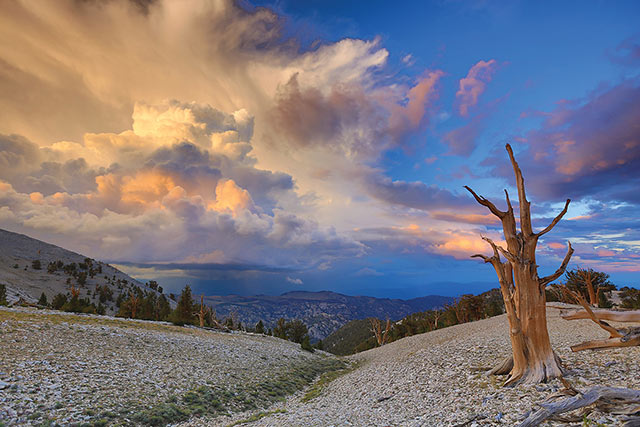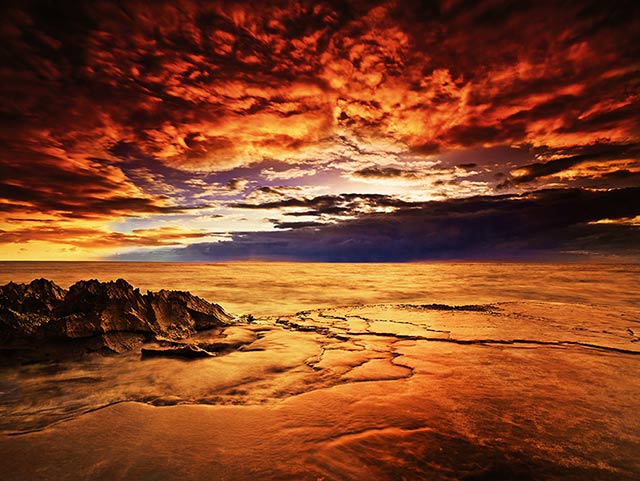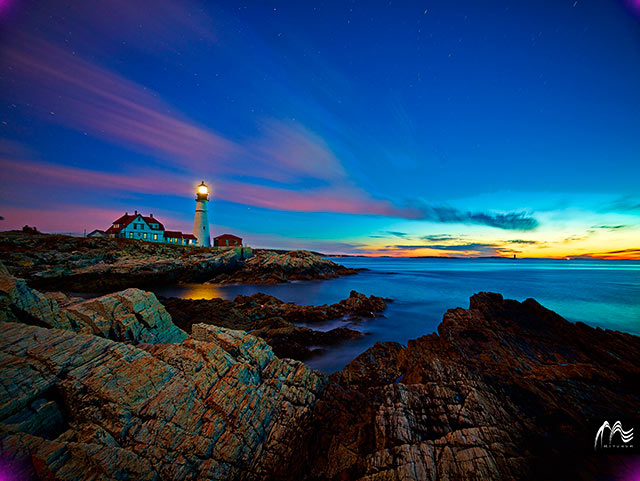
White Whisper
Yosemite National Park is a place of mystery and untold beauty, and I love to experience the solitude of the park during the winter months. Patience is a key attribute. I had envisioned this scene many years before the snow perfectly blanketed the trees. I knew I had to act quickly as the sun was beginning to warm the earth. Within an hour, the glistening snow that once coated the trees had melted away.
Composing a scene with the camera is a meticulous process. The pace is slow unless there is a fast-moving scene that requires quick instincts. However, for the majority of landscape works, an extensive visualization is required ahead of time. Arriving at the right hour, well in advance, is crucial to capture the golden moment.
One of the many reasons I personally still enjoy creating my images with film is that the medium demands a mastery of the scene and choosing subject matter with care before pushing the cable release. It helps eliminate the tremendous desire for the photographer to receive instant feedback through digital means. I feel that if the mind is trained to visualize the final scene without use of technology, the body of work can be greatly enhanced.

Souls of Life
After years of venturing to the White Mountains of California, the envisioned scene finally came together perfectly. Using a slow time-lapse captured the billowing skies and thunderheads dancing together with the sun’s light in perfect unison – nature at her best.
But whether through film or the use of digital cameras all photographers should learn to depend on their mind so they can learn to master the scene internally. This slow and methodical process will help develop more natural instincts and a disciplined way of working. By doing this, the violin of casualness will be eliminated.

Castaway
Inspiration often comes during daily workouts when I can clear my mind and focus on nature’s beauty. It was during one of these times that I came across a part of the San Diego shore that had lost sand from winter storms. The glorious forms of once-submerged rocks provided a rarely seen view of the seascape.
To create the image in his mind, I chose a stormy evening as the photograph’s backdrop, and used a 9-stop ND filter and an eight-minute exposure to transform the rough sea into a misty, watery glass. The rock in the center serves as a throne for an appreciative audience to sit and enjoy nature’s grand dance of light.
Another way to think about composition is “arrangement.” A trained eye can find elements in the scene that need to be placed in their proper spaces. Balancing these elements in perspective to each other is crucial to a successfully executed print.
Also, think Red Carpet! You don’t want to be on Mr. Blackwell’s “Worst Dressed List” because you stood at a stunning entrance only to put on the wrong clothes for the world to see. Landscape photography is the same; in addition to beautiful forms and balanced lines, nature also has chaos that needs to be organized. Essentially, we’re trying to organize and arrange chaos into a Mona Lisa. Where the camera is placed will determine how many distracting elements are eliminated.

Koholina
A long envisioned a masterpiece from the west shore of Oahu, Hawaii finally came to fruition. Much thought was given to the name of the piece. I wanted to describe the serenity of the space while giving homage to its Hawaiian origin. After speaking to locals about my creative journey, I decided on the Hawaiian word, Koholina, since the image perfectly captures the divine light shining over the shore bringing “Heaven to Earth.”
Don’t forget timing when planning a great print. This might come as a surprise, but on many occasions I have walked past potential images because an element is out of place or a desired extra layer is not in place. Whether the image needs to be a little higher up, or to the side, or closer to the ground, I look for a balanced scene that allows the eyes to move smoothly through the image to the most interesting part of the arrangement.

The Man
As the cooler months descend on Denali National Park, I like to ride my mountain bike over its 89 miles of roads and trails. On a random ride, I saw antlers appearing out of a dip in the land with Mount McKinley in the background; I just knew the perfect image was taking shape. After waiting patiently for five hours one of the largest animals in Alaska walked in front of the largest mountain in North America – creating this masculine masterpiece.
As for equipment, a tripod is a must for two reasons. Not only does it force you to go slow and be methodical, it also frees you from holding a camera. This way, you can walk through the scene with freedom until you find the right spot. Secondly, the blur in your images will be eliminated. It’s impossible to shoot successful landscape photography consistently with a shaking camera. So, set your camera on a solid tripod and go slow.

Seas of Tranquility
Patience is a virtue! Not one to toy with Mother Nature’s plan, the Portland Head Light in Cape Elizabeth, Maine was visited multiple times before finally pulling out the camera. During a morning stroll, I was enthralled by the marvelous light dancing on the waves over the ocean as the sun rose, framed by jagged rocks and sea stacks. Using long exposure times brought the scene to life.
Lastly, pick three or four locations that you like, revisit each of these places and begin to eliminate the least interesting elements until you settle on the one with the best balance and uniqueness. However, don’t be disappointed if the film comes back from the laboratory or you bring up the image on the computer screen and find that you have failed. Learn from the misplaced elements, grab that camera and head back out to the location and try again! It’s all part of the fun of creating your own Mona Lisa.

Muir’s Window
Ansel Adams’ and John Muir’s depictions of the environment have inspired me and shaped the way I view and capture nature and its beauty. During the process of making this photo, I was astonished to find a plaque that read: “Home of John Muir.”
by Jeff Mitchum
All text and photos: © 2013 Jeff Mitchum. All rights reserved.

Leave a Reply